|
In December, Modern Mythographer Press published my first book, 12 Lifetimes: A Century Cycle, a collection of memoir-adjacent poetic-essays in the ancient century form. Below is a reflection of my process of this project, from inception to release, also in the century form.
0 Comments
Yesterday, on Leap Day, a bunch of people presented a bunch of stuff at La MaMa. The work I sent to share is below -- 100 drawings with text (and color on occasion). It's been an almost yearlong project, prompted by Erik Ehn, who strove to get 1000 people to make 100 things with the topic of praise in mind. I'm not sure how many ultimately signed on and crossed the finish line, but after some glances at the giant collective document... There is a tsunami of stuff made by a boatload of people. Let's leave it there. About yesterday's event, Ehn said: "The gathering at La MaMa centers on the peacefulness of time gone by. We’re catching breath together at a finisterre -- taking off our shoes and looking at the wear and tear and steady-on in the lot of them after a nice long walk." I was able to pop in briefly to witness the happening over Zoom yesterday before my afternoon classes and agree that even through the screen, that is how the time/space appeared/felt/seemed. My scanned drawings are below. If you click on them, you can see them expanded. I opted for the gallery layout, versus slideshow, to see them all en masse. You can see more thoughts about this project below the images (in a reflection that might have gotten read at La MaMa yesterday), which puts together a lot of the thoughts I had while doing this series (so lots of repeats if you've been following along thus far). Previous posts, with just the image first drafts (no text, no color) you can see here and here and here and here (I posted them in increments of 25). Moments from a year. Time spending attention with intention. That's all they are, really. I could probably say more, but would rather let the images speak for themselves (and that bunch of text at the bottom, if you're just joining and want context). Enjoy! Drawing Attention For this shared experience, I decided to make 100 drawings of objects, items, living beings, environments, all in the same sketchbook -- so no do-overs -- and using pigma archival ink pens -- so no erasing. In my teen-and-preteen years I greatly enjoyed drawing. I've played with it here and there since then, but this isn't a discipline I've much cultivated in the last 20 years -- especially drawing images in front of me rather than from memory or imagination.
I wanted to let myself try something new (or old but undeveloped) and not be good at it, like an arm-balancing posture in a yoga class. I wanted to lower judgement to an appropriate level, as David Glass asks artists and creative humans to do in his workshops. I set the bar low enough for myself that I could trip over it and fall onto my sketchbook, as I learned from playwright Dano Madden, who learned that from Jeni Mahoney (who may have been quoting Rick Dresser) in reference to the writing/playwriting process. After making 100 drawings, the plan was to go back and add text, and then in a final step, go back and add to either the drawing or the text in each piece -- again, without erasing. That could mean adding color, tending to shading, form, line, detail. In pairing text and image, I wanted to tend to the overarching theme by praising of everyday things, primarily by paying attention to their qualities, dimensions, articulation. This process came from an exercise I learned from writer Cindy Shearer in another durational text/image project I participated in while an MFA student at California Institute of Integral Studies. In pursuing this project, part of me rebelled. "What are you doing? Isn't this getting in the way of your writing time? You wanted to write a new play this summer (and fall, when writing one in the summer didn’t happen). Think about all the hours that are now going into this practice and not that script." At the same time, I felt myself unlocking something deeper in my creative landscape by paying more attention to these subjects. I found that I don't really see something until I start to draw it, even more so than when I write about it. After I spend time looking and sketching, everything in the world looks more like art pieces in and of themselves. The way a light post stands tall apart from other objects in a parking lot. The shadows between every leaf in the maple out back. The way lines curve. That makes me approach the world and that day with more gentleness, more openness, more willingness to see the magic surrounding us at all times. Less judgment. It's all just stuff. We're all just stuff. It's all okay. By paying better attention to what I'm paying attention to, through this process I started to uncover what unfolds from within. Not moving toward any finished product, I was able to discover what I uncovered: a way of seeing that I want to keep developing. Once I got halfway through the drawing process, I started thinking more about seeing and attention. Not just what I'm seeing and paying attention to (in that moment and throughout the day/week/season/year), but the idea that whatever anyone is making, whether creatively (a play, a film, a painting, a novel), relationally (a conversation, a touch, a connection), things big and small we make in all parts of our lives (avocado toast, a plan for the day, a baby) and even what is destructive (a hate crime, a bomb, an insult) is an assemblage of what we pay attention to, what we see and what in turn pays attention to us. Thinking about that, the simultaneous ultra-simplicity and overwhelming complexity of that, I start to pay more attention to what I'm paying attention to, how that impacts me, how that object or way of seeing makes me feel or what it makes me think about. Which makes me think about the space between those focused blips of attention: when I'm distracted, unfocused, floating away into daydreams, answering emails or sleeping. Even in those moments I'm paying attention to something (which makes me want to pay attention to whatever that might be). I wonder if this mindset is getting me paying attention with better intention, to what that means in action and what that feels like. I hope that's what's happening. Because I'm paying attention to that intention (of how to pay attention with greater intention), then perhaps that intention is also paying attention right back to me. Magnets pulling each other closer together. Once I got toward the end of the drawing period in my last 25 drawings, I felt the pull to be done. I had to push myself to stay present instead of rushing through to the end, especially when other creative projects were fighting for my attention. I felt how much of a durational project this was and I started getting more tired, bored and impatient. I had to find more ways to treat myself for drawing time. While I knew it wasn't, this started feeling more like a waste of time ("What? Go draw? I have a book to finish and promote! I have a play to finish! I have another play going into auditions and starting rehearsals! My students need me!"). That sense of resistance alerted me all the more that I needed to continue. In the middle-to-end stage of any process worth doing, I can feel lost at sea. This reminds me that the last 10% of a creative act can take 90% of the time, or how I can get caught up in discursive thoughts in the midst of meditation, or perhaps how an ultra-marathoner might feel in the middle-end of a long race. Having reached 100, then having gone back to add text and then having gone a third time to add in more detail, I feel quite joyful at this stage of the work, whatever it may be. If nothing else, here is a moment of praise (not to me, but to the universe) for being able to reach 100 somethings. This 2023 reflection is coming a bit later than planned, as 2024 has started in a full-throttle way. For that reason, it's short on the reflective side, with fewer processing thoughts than usual. Regardless, here are some highlights from a big year of learning and moving forward, a few goals for the next two years and some favorite images from 2023. Highlights:
3 Big Goals for the Next Two Years:
While I do want to continue stepping into my power, letting go of what I don't need and inviting what I want into my life, I also notice that as this year begins, I am in a time of enormous happenings, which may continue all year long. Many are big for me. Many I've wanted a long time, worked hard to receive and have gotten thanks to immense help from loads of dear ones. I am grateful for all of it and don't want to rush through these events tense and intense, without taking stock, appreciating and experiencing in full. Through this year and all the steps/milestones underway, I want to practice being with those happenings. By this, I don't mean resting on my laurels, but actually enjoying what I'm doing while I'm doing, staying present with those actions as they're happening -- so they don't all pass me by with an attitude of mental frenzy. Therefore, may this be a year of softening inside, to feel the glow of my inner flame amongst such activity and forward movement -- without letting it/me burn out. I want to slow down in my body while going with the flow of the momentum -- while not trying to control the outcome. Last year was a major time of growth that continues into 2024. Many of those days, I'm feeling the turbulence. I know there will be even greater need this year for finding moments, days, weeks to go on airplane mode, decrease the tempo and go solo into retreats, to see who I am as a human being apart from all the doing. As we/many of us keep walking/running/sprinting forward, in a time with such regional/national/global chaos, change, uncertainty and violence -- I know this year I must cultivate inner peace, so my actions don't just add to the noise, but help us/me pay attention with greater intention...and so my own well doesn't dry up. May this be a year of finding grace within the fire, while enjoying the warmth of those flames. I completed my 100th drawing in Erik Ehn's 100K Project last week. That means I've finished the first stage of the process I'm undertaking for this big group project. See more context about what the heck that means below the slideshow of images. In these last 25 drawings, I definitely felt the pull to be done. I had to be mindful to stay present instead of rushing through to the end, especially when other creative projects were fighting for my attention. I felt how much of a durational project this is and I started getting more tired, bored and impatient. I had to find more ways to treat myself for drawing time. While I knew it wasn't, this started feeling more like a waste of time ("What? Go draw? I have a book to finish and promote! I have a play to finish! I have another play going into auditions and starting rehearsals! My students need me!"). That sense of resistance alerted me all the more that I needed to continue. In the middle-to-end stage of any process worth doing, I can feel lost at sea. This reminds me that the last 10% of a creative project can take 90% of the time, or how I can get caught up in discursive thoughts in the midst of meditation, or perhaps how an ultra-marathoner might feel in the middle-end of a long race. Having reached 100, I feel quite joyful at this stage of the work. We'll see how I feel as I begin the next stage. Stage two is adding text. Stage three will be adding a bit more to either the words or the drawing of each text/image piece. Yesterday I bought myself new pens for the next stages, some replacing well worn instruments, some in color. If nothing else, here is a moment of praise (not to me, but to the universe) for being able to reach 100. Again, for more context (basically a repeat if you've read any of my last three posts):
Erik Ehn likes to bring big groups of artists together to generate material in experimental, experiential ways. Earlier this year he invited a large group of folx, myself included, to create 100 things by next Leap Day (February 29, 2024). The overall aim is a social reflection on praise. He hoped to gather 1000 participants -- a thousand artists committing to generate a hundred artistic gestures each, on the theme of praise, so 100,000 gestures. I don't know how many people ultimately agreed, but there are a lot of us making 100 things. I decided to make 100 drawings of objects, items, living beings, environments, all in the same sketchbook -- so no do-overs -- and all using pigma archival ink pens -- so no erasing. After making 100 drawings, I'll go back and add text. I'll write whatever strikes as I look at each image again. After that, I'll go back and try to add to/improve either the drawings or the text -- again, without erasing. Maybe I'll add color. Maybe I'll tend more to shading, form, line, detail. This comes from an exercise I learned from Cindy Shearer in another durational text/image project I participated in while I was an MFA student at California Institute of Integral Studies. This week I completed my 100 drawings. See the photos (76-100) above as process photos, not formal, well-cropped or composed in any way, marking my progress through the quantity rather than quality. You can check out 51-75 in the post below this one, 26-50 in the post below that one and 1-25 in the post below that. When I finalize them more (with text and so forth) I plan to share those as well, here and/or on Instagram. After I spend time looking and sketching, everything in the world looks more like pieces of art. That makes me approach the world and day with more gentleness, more openness, more willingness to see the magic surrounding us at all times. Less judgment. It's all just stuff. We're all just stuff. It's all okay. I completed my first 75 drawings in Erik Ehn's 100K Project this week. That means I'm three-quarters through the first stage of the process I'm undertaking for this big group project. See more context about what the heck that all means below the slideshow of images. While completing the last 25 drawings, I've thought more about seeing and attention. Not just what I'm seeing and paying attention to (in that moment and throughout the day/week/season/year), but the idea that whatever anyone is making, whether creatively (a play, a film, a painting, a novel), relationally (a conversation, a touch, a connection), things big and small we make in all parts of our lives (avocado toast, a plan for the day, a baby) and even what is destructive (a hate crime, a bomb, an insult) is an assemblage of what we pay attention to, what we see and what in turn pays attention to us. Thinking about that, the simultaneous ultra-simplicity and overwhelming complexity of that, I start to pay more attention to what I'm paying attention to, how that impacts me, how that object or way of seeing makes me feel or what it makes me think about. Which makes me think about the space between those focused blips of attention: when I'm distracted, unfocused, floating away into daydreams or sleeping. Even in those moments I'm paying attention to something (which makes me want to pay attention to whatever that is). I wonder if this mindset is getting me paying attention with better intention, to what that means in action and what that feels like. I hope that's what's happening. Because I'm paying attention to that intention (of how to pay attention with greater intention), then perhaps that intention is also paying attention right back to me. Magnets pulling each other closer together. Maybe these thoughts are starting to spiral in on themselves (or fractal out?) because for the first time I'm reading House of Leaves and that labyrinthine dive is pointing out some uninhabited hallways growing and reconfiguring inside my internal conch shell. Don't worry about paying attention to all of that. You can just look at some little drawings. Again, for more context (basically a repeat if you've read either of my last two posts):
Erik Ehn likes to bring big groups of artists together to generate material in experimental, experiential ways. Earlier this year he invited a large group of folx, myself included, to create 100 things by next Leap Day (February 29, 2024). The overall aim is a social reflection on praise. He is gathering 1000 participants (he's still looking for more people -- if this sounds up your alley, let me know). This means a thousand artists committing to generate a hundred artistic gestures each, on the theme of praise. This means 100,000 gestures (they can be small, ephemeral, even 100 blinks in time...). As Erik said in his email call, "The math is arbitrary and held out as a motive. 100K is a vest pocket version of Revelation’s 'ten thousand times ten thousand angels'; it lines up with The Hundred Thousand Songs of Milarepa." I decided to make 100 drawings of objects, items, living beings, environments, all in the same sketchbook -- so no do-overs -- and all using pigma archival ink pens -- so no erasing. I'm lowering judgement to an appropriate level, as David Glass asks artists and creative humans to do in his workshops. I'm setting the bar low enough for myself that I can trip over it and fall onto my sketchbook, as I learned from Dano Madden, who learned that from Jeni Mahoney (who may have been quoting Rick Dresser) in reference to the writing/playwriting process. After making 100 drawings, I'll go back and add text. I'll write whatever strikes as I look at each image again. After that, I'll go back and try to add to/improve either the drawings or the text -- again, without erasing. Maybe I'll add color. Maybe I'll tend more to shading, form, line, detail. In the pairing of text and image, I'll try to attend to the overarching theme in praise of everyday things, just by paying attention to their qualities, dimensions, articulation. This comes from an exercise I learned from Cindy Shearer in another durational text/image project I participated in while I was an MFA student at California Institute of Integral Studies. This week I completed my 75th drawing. See the photos (51-75) above as process photos, not formal, well-cropped or composed in any way, marking my progress through the quantity rather than quality. You can check out 26-50 in the post below this one and 1-25 in the post below that. When I finalize them more (with text and so forth) I plan to share those as well, here and/or on Instagram. Pursuing this project, I feel myself unlocking something deeper in my creative landscape by paying more attention to these subjects. I find that I don't really see something until I start to draw it, even more than when I write about it. After I spend time looking and sketching, everything in the world looks more like pieces of art. The way a light post stands tall apart from other objects in a parking lot. The shadows in between every leaf in the maple. The way lines curve. That makes me approach the world and day with more gentleness, more openness, more willingness to see the magic surrounding us at all times. Less judgment. It's all just stuff. We're all just stuff. It's all okay. I'll continue and discover what I uncover, not moving toward any finished product, but by paying better attention to what I'm paying attention to, through this process I'll see what unfolds from within. If you'd like to participate in something like this and commit to 100 gestures of your own by February (it can be much simpler than what I'm attempting), let me know. Seriously. I completed my first 50 drawings in Erik Ehn's 100K Project this week. That means I'm halfway through the first stage of the process I'm undertaking for my own contribution in this big group project. See more context about what the heck that all means below the slideshow of images. Erik Ehn likes to bring big groups of artists together to generate material in experimental, experiential ways. Recently he invited a large group of folx, myself included, to create 100 things by next Leap Day (February 29, 2024). The overall aim is a social reflection on praise. He is gathering 1000 participants (he is still looking for more people -- if this sounds up your alley, do let me know). This means a thousand artists committing to generate a hundred artistic gestures each, on the theme of praise. This means 100,000 gestures (they can be small!). As Erik said in his email call, "The math is arbitrary and held out as a motive. 100K is a vest pocket version of Revelation’s 'ten thousand times ten thousand angels'; it lines up with The Hundred Thousand Songs of Milarepa."
I decided to make 100 drawings of objects, items, living beings, environments, all in the same sketchbook -- so no do-overs -- and all using pigma archival ink pens -- so no erasing. I'm lowering judgement to an appropriate level, as David Glass asks artists and creative humans to do in his workshops. I'm setting the bar low enough for myself that I can trip over it and fall onto my sketchbook, as I learned from Dano Madden, who learned that from Jeni Mahoney (who may have been quoting Rick Dresser) in reference to the writing/playwriting process. After making 100 drawings, I'll go back and add text. I'll write whatever strikes as I look at each image again. After that, I'll go back and try to add to/improve either the drawings or the text -- again, without erasing. Maybe I'll add color. Maybe I'll tend more to shading, form, line, detail. In the pairing of text and image, I'll try to attend to the overarching theme in praise of everyday things, just by paying attention to their qualities, dimensions, articulation. This comes from an exercise I learned from Cindy Shearer in another durational text/image project I participated in while I was an MFA student at California Institute of Integral Studies. This week I completed my 50th drawing. See the photos (26-50) above as process photos, not formal, well-cropped or composed in any way, marking my progress through the quantity rather than quality. Posting after completing every new 25 images seems like a good enough regular update. You can check out 1-25 in the post below this one. When I finalize them more (with text and so forth) I plan to share those as well. In pursuing this project, I feel myself unlocking something deeper in my creative landscape by paying more attention to these subjects. I find that I don't really see something until I start to draw it, even more so than when I write about it. After I spend time looking and sketching, everything in the world looks more like pieces of art in and of themselves. The way a light post stands tall apart from other objects in a parking lot. The shadows in between every leaf in the maple out back. The way lines curve. And that makes me approach the world and day with more gentleness, more openness, more willingness to see the magic surrounding us at all times. Less judgment. It's all just stuff. We're all just stuff. It's all okay. So I'll continue and discover what I uncover, not moving toward any finished product, but by paying better attention to what I'm paying attention to, through this process I'll see what unfolds from within. And if you'd like to participate in something like this and commit to 100 gestures of your own (it can be much simpler than what I'm attempting), let me know. Seriously. Erik Ehn likes to bring big groups of artists together to generate material in experimental, experiential ways. Recently he invited a large group of folx, myself included, to create 100 things by next Leap Day (February 29, 2024). The overall aim is a social reflection on praise. He is gathering 1000 participants (I think he is looking for more people -- if this sounds up your alley let me know). This means a thousand artists committing to generate a hundred artistic gestures each, on the theme of praise. This means 100,000 gestures (they can be small!). As Erik said in his email call, "The math is arbitrary and held out as a motive. 100K is a vest pocket version of Revelation’s 'ten thousand times ten thousand angels'; it lines up with The Hundred Thousand Songs of Milarepa." With about as much arbitrary yet focused planning, I decided to make 100 drawings of objects, items, living beings, environments, all in the same sketchbook -- so no do-overs -- and all using pigma archival ink pens -- so no erasing. In my teen-and-preteen years I greatly enjoyed drawing. I've played with it here and there since then, but this isn't an art discipline I've particularly cultivated in the last 20 years -- especially drawing images in front of me rather than from memory or imagination. So in that sense I'm letting myself try something new (or old but undeveloped) and not be good at it, like an arm-balancing posture in a yoga class. I'm lowering judgement to an appropriate level, as David Glass asks artists and creative humans to do in his workshops. After making 100 drawings, I'll go back and add text, as I did on the door (#17) below in the more hasty sketch in a recent writing workshop, trying to put all the steps together in under an hour (and letting myself live with the failures in that stretch). After that, I may go back and try to add to/improve either the drawings or the text -- again, without erasing. Maybe I'll add color. Maybe I'll tend more to shading, form, line, detail. In the pairing of text and image, I'll try to attend to the overarching theme in praise of everyday things, just by paying attention to their qualities, dimensions, articulation. This week I completed my 25th drawing. See the photos below as process photos, not formal, well-cropped or composed in any way, marking my progress through the quantity rather than quality. Posting after completing every new 25 images seems like a good enough regular update. When I finalize them more with text and so forth I may share those as well, perhaps scanned, around the time I send them to Erik, but by then I will be deep in my fall-spring semesters at Boise State University and the Dramatists Guild Institute Certificate Program, so no promises. In pursuing this project, part of me thinks, "What are you doing? Isn't this getting in the way of your writing time? You wanted to write a play this summer. Think about all the hours that are now going into this practice and not that script." But at the same time, I feel myself unlocking something deeper in my creative landscape by paying more attention to these subjects. This isn't a new thought, but I find that I don't really see something until I start to draw it, even more so than when I write about it. After I spend time looking and sketching, everything in the world looks more like pieces of art in and of themselves. The way a light post stands tall apart from other objects in a parking lot. The shadows in between every leaf in the maple out back. The way lines curve. And that makes me approach the world and day with more gentleness, more openness, more willingness to see the magic surrounding us at all times. So I'll continue and discover what I uncover, not moving toward any finished product, but by paying better attention to what I'm paying attention to, through this process I'll see what unfolds from within. And if you'd like to participate in something like this and commit to 100 gestures of your own (it can be much simpler than what I'm attempting), seriously do let me know. Or: The terrible responses our imaginations work up about our art and what we can do about them  Photo by Steve Johnson on Unsplash A couple months ago, my brother asked for some input regarding some pieces of writing that he was holding off publishing, in part because of the terrible responses he imagined hearing when certain people might see what he wrote. We had an email thread conversation about that and he then said one of my replies should be a blog article.
Because he's my big brother who has a lot of wisdom and one of the first people I knew to have a blog, and because I bet a lot of people (myself included) delay sharing their work for the same reasons, the text of that email makes up the majority this post -- a little revised for clarity and context -- one that I hope will get me back on a more consistent posting schedule, too. If you've been avoiding writing/sharing/making/doing something for similar reasons, I hope there's something here you might find useful here as well. -- Yes, our imaginations can work up some pretty awful responses to the writing (art, anything...) we put out in the world. Often these imagined reactions are not based in reality. The fact that those projected statements and voices are not based in reality can be what makes those fears (or monkey mind thoughts, or the editor, the censor) most powerful. They come from that part of our brain that just wants to keep us safe, keep us in status quo, keep us from going out of our comfort zone because that's what it's evolved to do to keep us alive. All it wants is to get us to stop writing (and/or stop doing whatever scary thing it is that might be what we really want to do with our life). There's an exercise Beth Pickens (a creativity consultant who lives in the Bay Area) gives her clients sometimes: work out all the possible worst-case scenarios to their very end. With that in mind, what might happen if these people do object to the writing and artwork you release? What's the worst thing they can say? What would happen if they said that? And what would happen after that, and after that, and after that? (Invariably, Pickens says this train of thought goes on until every client ultimately says, "and then I'll go broke and die," or something like that.) So...what happens if you work out that fear until it reaches the very bottom of the barrel, and see just how dramatic your imagination can go -- and then decide what you'll do anyway? And/or then go the other way -- what happens if you don't publish? If you don't make the thing you've always wanted to make, or go where you've always wanted to travel, or book the scary gig, or ______ (fill in the blank with what fits your circumstance)? How will you feel if you continue to keep the book (proverbial or literal) in the drawer? How will you feel if you do publish? Where do you feel that in your body? Often our bodies know what we need to do, but we train ourselves to tune that out. Instead, what if we listen to what our bodies have to say? Or as Oliver Burkeman quotes James Hollis in Four Thousand Weeks, what happens if we ask ourselves, "Does this choice diminish me, or enlarge me?" (I'm asking myself that about a lot of decisions right now.) Often that fear (of writing, publishing, sharing, doing anything that moves us toward the life we want) is the resistance Stephen Pressfield talks about in The War of Art -- resistance being the sign that the thing you're afraid of IS the thing you need to be doing. Resistance is going to try to find any way possible to stop you from doing the thing that takes you out of the comfort zone -- so you can use it as a compass that will show you the direction you(r larger, higher, wiser self) want(s) to go. Or as I recently heard someone paraphrase Iyanla Vanzant, "If there's not something in your life that pushes you to the point where the pee is running down your leg, then you ain't living big enough." And so then, if you decide to go ahead and publish (or do whatever it is you want to do with your art/life/work), which I hope you do, what is the least you need to do next in order to feel good about that decision and move forward? (In the case of publishing something that someone might not like, such as a piece of writing that could affect someone else because it includes something they said or did, do you give them a heads up? do you let them read a bit of it? do you draw a boundary around how they can respond if you decide to share it with them early, or how much you'll let their reactions affect you? or do you let all of that go and hope for the best?) In other words, what is the smallest next step on the way to your big goal? Not what are the five next things you can do -- but what is ONE tiny thing you can do right now? Can you do that little thing? Right now? Please do. Your art, audience and I thank you for doing that. On Valentine's Day, my partner spouse best friend favorite musician Thomas Paul and I released a collaborative digital album called Drown To Resurface, featuring poems from my chapbook of the same name layered over his impressionistic instrumental guitar sketches.
We both have future plans for these pieces. I want to publish the chapbook physically. He plans to develop and embellish the instrumentals into a separate album. We hope to get the published book to hold a disc of those developed instrumentals in a pocket. To print a download code for this digital combined version on the back, too. I want the book serve as much as liner notes for the recordings as a collection of poems. For now, it feels satisfying to share something that is finished on one level, knowing there will be other elements of further completion down the road. I've been working on the chapbook version of Drown to Resurface: water poems for a while. Most of the poems are about 10 years old. I didn't set out to write a book with them, but once they filtered into one, I went about my usual process of jamming in too many verses, whittling down and down and down, finally through massive cuts seeing what the thing was and then writing a few more poems to round out that thing. The album is a project Thomas and I have talked about doing for several years, too. I've been a fan of poetry-music albums since I was introduced to Dottie Grossman's work. I since messed around with previous text/music collaborations that halted early or found quick endings when theater projects closed. Like Grossman's albums with Michael Vlatkovich, in 2016 I began talks with Thomas about bringing words to his instrumentals and smashing them together like John Cage and Merce Cunningham did with music and dance. We played with early, live renditions of this venture a few times along the way. We knew this text/tune combo wasn't/isn't something new. We weren't looking to reinvent wheels. But it sounded fun. The most fun part, I thought, was slapping the sounds and sentences together without pre-thinking or trying to arrange them formally into songs or compositions, but letting both parts sway and spar in whatever ways they connected/collided. Last fall, once I decided the book of poems was as done as I wanted it to be,Thomas and I scheduled time with our friend Cory Strop in his home studio. I recorded all the poems one December day in two takes each, just in case. Then through the rest of December, January and a little of February, Thomas went in for his recordings, likewise with a take or two each. After combining the two layers, he and Cory gave them a touch of finesse -- because though I love Cage and Cunningham's pure collision, I also love Laurie Anderson and figured that if she made an album with her partner/spouse (etc.) Lou Reed, they probably would have given it a little polish. Even so, each element of each piece was conceived and recorded separately. After choosing which take, we pretty much let the recordings stand as they were. I requested that one word in one poem be replaced with the same word from the other take because it sounded like too much vocal fry up front. Thomas did one new recording of one section, but that was all. For people who tend to re-re-re-revise in painstaking ways (painstaking for us and people who make art with us), it felt liberating and a little scary -- at least for me -- to let go of control and let them land as they fell. Not including the years of occasional talking and musing about the collaboration, the years of writing/rewriting the poems or the years between when his first song ideas came to life and when they got stuck in a drawer before unearthing them again, the album took a few months, tops. For a cover image, I remembered working with a photographer who impressed me with her water shots during a site-specific, interdisciplinary, collaborative project in graduate school. I asked Shannon O'Neill-Creighton if we could use one, with hopes of asking her again if we can commission another photo for the book/disc rendition. She said yes to the first. We'll see what happens with the next request once we get our act together for parts two and three. For now, you get the digital version. I'll send word when ambitions, time and money align for the grander scheme. And hey, if you pay to download the album now, it'll help us on our way to the larger plan. It's nice to let something go out into the world without futzing with it and trying to perfect it for (more) years (than we already have). It's a relief to not spend a decade trying to get the gatekeepers to say it's good enough for a lauded release backed by a publishing house/theater company/literary journal. We made something. Then we shared it. Like when we were kids. Independent musicians have known for a long time that their industry is impossible. The line to the welcoming door is too too long. They found another door. They made their own door. Same with filmmakers. I played around with small bits of self-production as a younger playwright. Then I was convinced that if I wanted the plays to get produced more than once, I had to go the standard way. A colleague assured me early on that self-publishing literary work is a no go, as well. I listened. I still squirm a bit when I think of going those independent routes, but now I'm more curious. When it makes the difference between having the plays/books/albums/films get made at all or having them live in a cabinet forever, dying in new play development hell (though I do love new play development, I do!) or in submission purgatory suffocating with 999 other plays/poems/stories/essays per opportunity, letting those babies go off and make their little mark, even with the tiniest of audiences, seems more worthwhile than it once did. I can learn a lot from indie musicians. Enjoy the album. Consider paying to download it. Proceeds will go toward future dreams. For all of you who have already downloaded and paid more than the listed price -- or whatever you could -- THANK YOU. And thank you, Thomas, for making something with me. I'm lucky to share a life with you. When I reflect on wins, losses, missed opportunities and new connections this past year, I notice that losses and missed opportunities I could name almost outnumbered the wins, which I don't remember happening before. Though surprising, this feels affirming. That word choice might sound odd, but this was something I felt in my skin, so seeing the numbers in black and white validated the low-grade hum playing between of my ears. Though markedly less cataclysmic for a privileged person like me than 2020 and 2021, I felt creative difficulties tripping me up in 2022. This was a slower year for writing progress and projects, I got nos where I thought I had yeses in the bank, timelines pushed back, collaborations stymied, I didn't quite make my submission goals and I spent long term residency in the limbo waiting room familiar to most writers and playwrights. I seemed to have better luck getting play productions and readings during the upheaving 2020-2021 pandemic years. Yet within that, as the redwoods I communed with this summer forever experience (reading The Overstory by Richard Powers has been knocking me through the gut this winter -- anyone else?), I feel a steady growth setting the stage for something larger. I worked a lot of this year on letting go -- both in physical ways, starting Marie Kondo's famous tidying process, in emotional and neurological ways through EMDR and in calendar ways, carving out more space in my schedule. I said no to online summer classes and took on only two fall semester classes at Boise State University, instead of the maximum three for adjuncts I've maintained for years. I got better at stopping work after 6, checking email just once a day (at least my personal email, if not the university one), didn't work on Sundays at all besides my daily writing/movement/meditation practice (unless I had a reading or similar event) and tried to focus my Saturdays on arts work, rather than teaching and related administrative tasks. I'm getting more familiar with the sound of "no" coming out of my mouth, even if I try to retract my boundaries right afterward (or spend an afternoon breathing through anxiety attacks when I don't). Overall, I'm beginning to break lifelong habits caused by maladaptive beliefs. This moment, I feel monumental change simmering in me, which could be years or decades in the making. Having less major news to broadcast feels right. I've made a lot of tiny steps toward big projects in multiple disciplines. Thoughtful groundwork is being laid, rather than panicky DOING and addictive FORWARD MOVING all the time. That feels meaningful, even if that makes for a humbler list of bullet-point successes. At the same time, awesome stuff did happen last year. I'm not discounting any of those events, some of which were life-changing. I'm grateful and have no complaints -- but a "this year was better than ever" post seems untrue. Some years are great, some are the opposite and some feel suspended in alien liquid like Wolverine in the Augmentation Room's water tank after the Weapon X team drafted adamantium into his bones--. Before I get more carried away with X-Men analagies, here are some highlights from 2022. Highlights:
I did make some progress on my 2022/2023 goals, but I noticed the objectives I wrote down for the last few years depended more on other people (and organizations) than on me. As Andrew Simonet encourages, it's important to plan goals that I have (relative) control over, more than ones that rely on outside parties. Some of those earlier intentions (related to silent meditation retreats, international travel and financial stability) may still be on the back burner, but I'm adjusting my focus as I look ahead. 3 Big Goals for the Next Two Years:
This year, I want to keep letting go of what I don't need and to step into, reclaim, live inside and even enjoy my own power (read: get out of my own way). It's time to unbind my inner goddess, connect with my artist child, listen to my madwoman in the attic, learn from my witch in the woods and altogether let my wild woman run free. And if/when I scare myself in the process, breathe, ingest some compassion and cut myself some slack. Thanks everyone for reading, inspiring me with your own year-end/beginning reflections and for doing what you can to support the artists you love (including yourselves). Guiding words for my 2023: Power Care Self (or Self Care) Breakthrough Gratitude |
Like what I'm posting? You can leave me a tip!
$1, $10, $100, whatevs :) Heidi KraayProcess notes on a work in progress (me). This mostly contains raw rough content pulled out of practice notebooks. Occasional posts also invite you into the way I work, with intermittent notes on the hows and whys on the whats I make. Less often you may also find prompts and processes I've brought to workshops, as well as surveys that help me gather material for projects. Similar earlier posts from years ago can be found on: Archives
April 2024
Categories
|




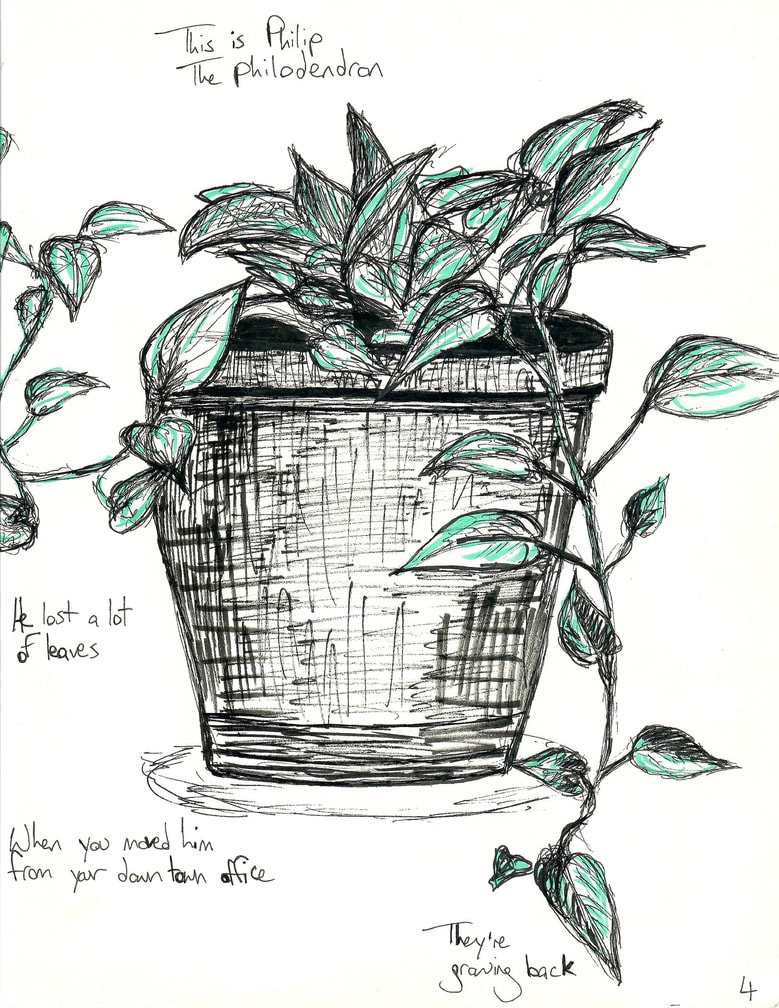



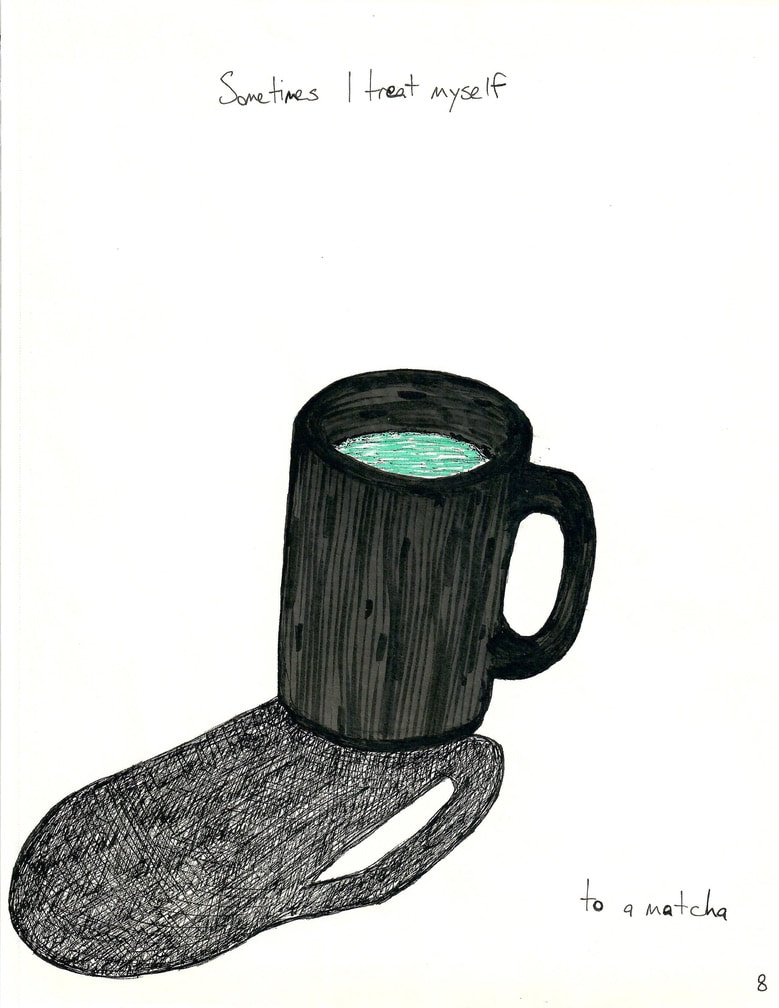






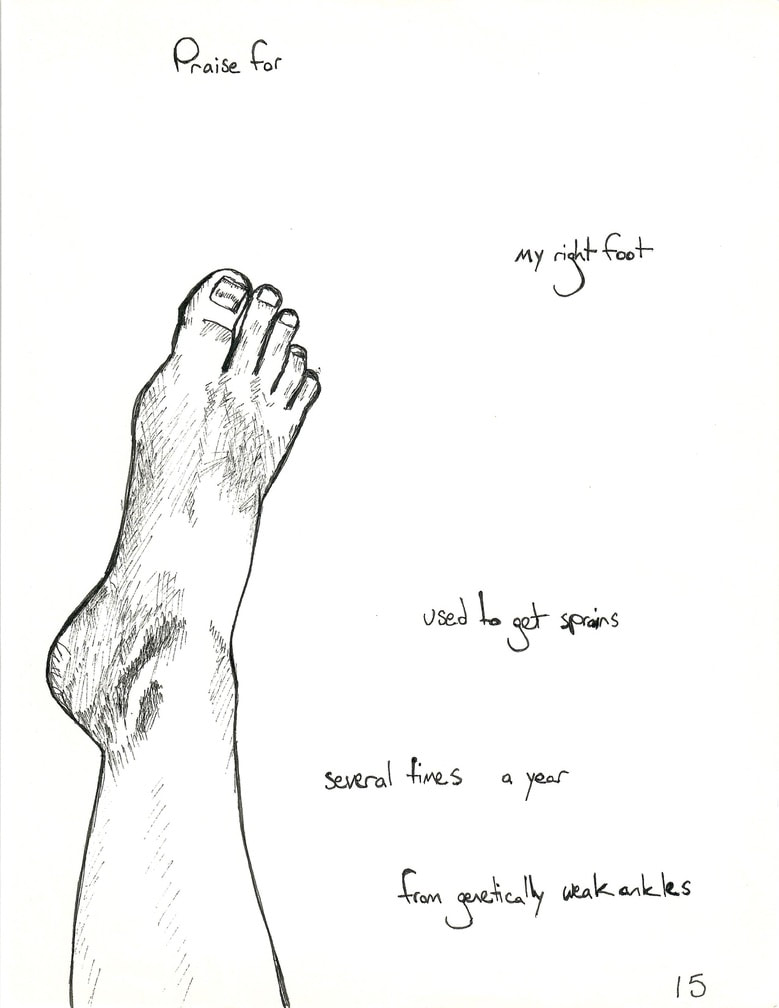
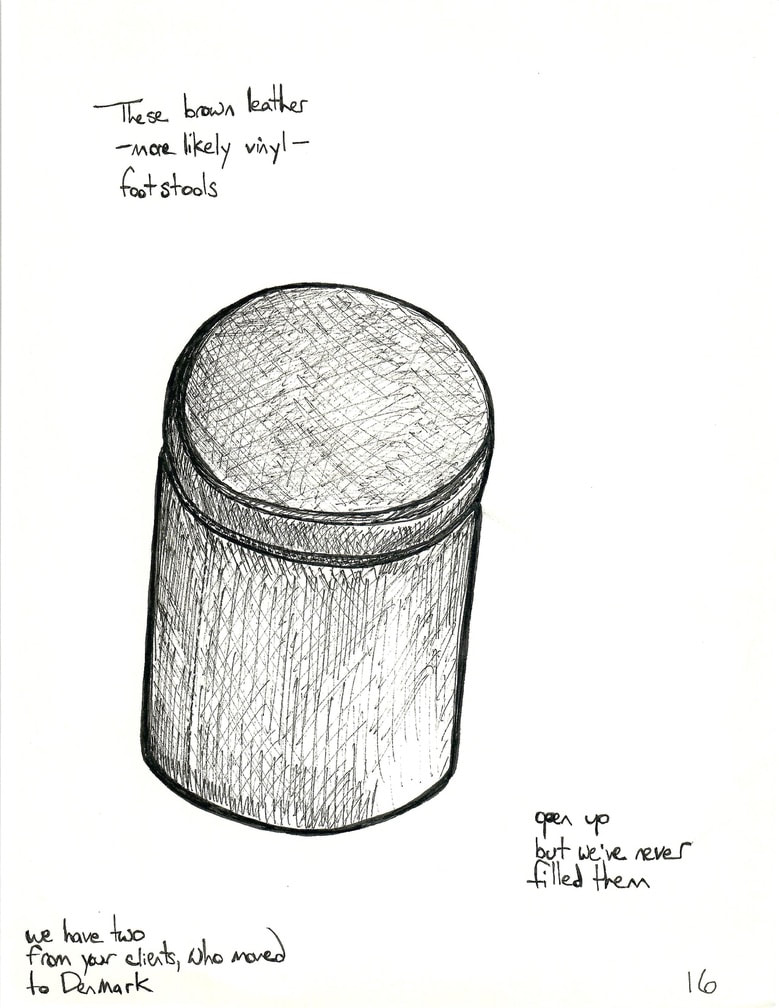



























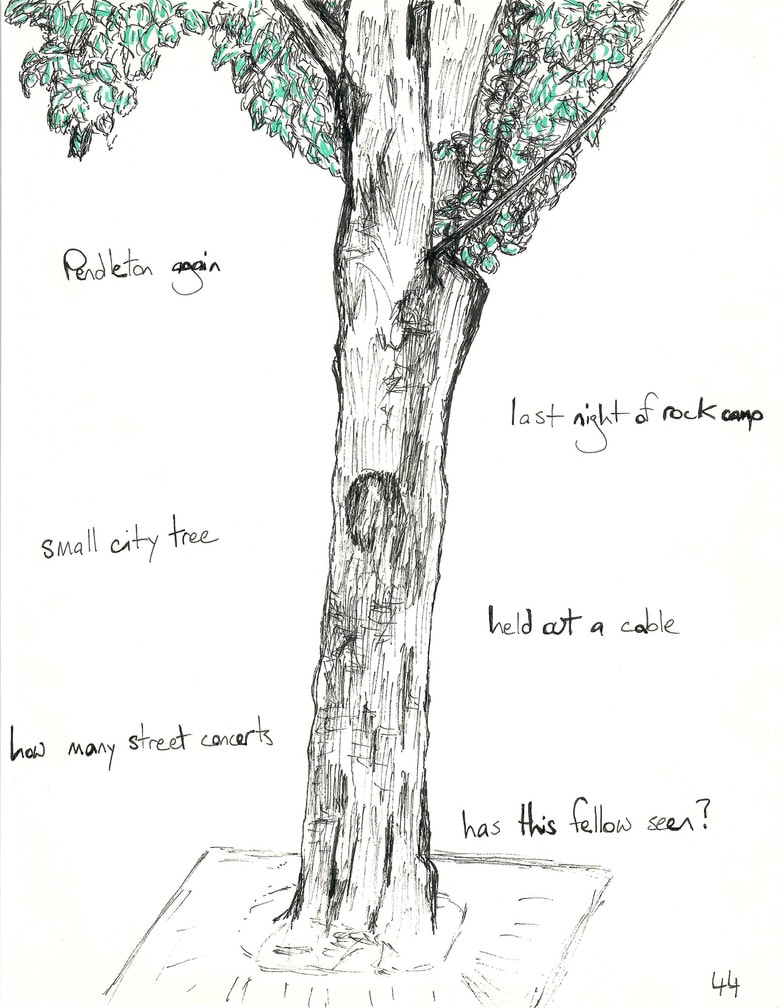












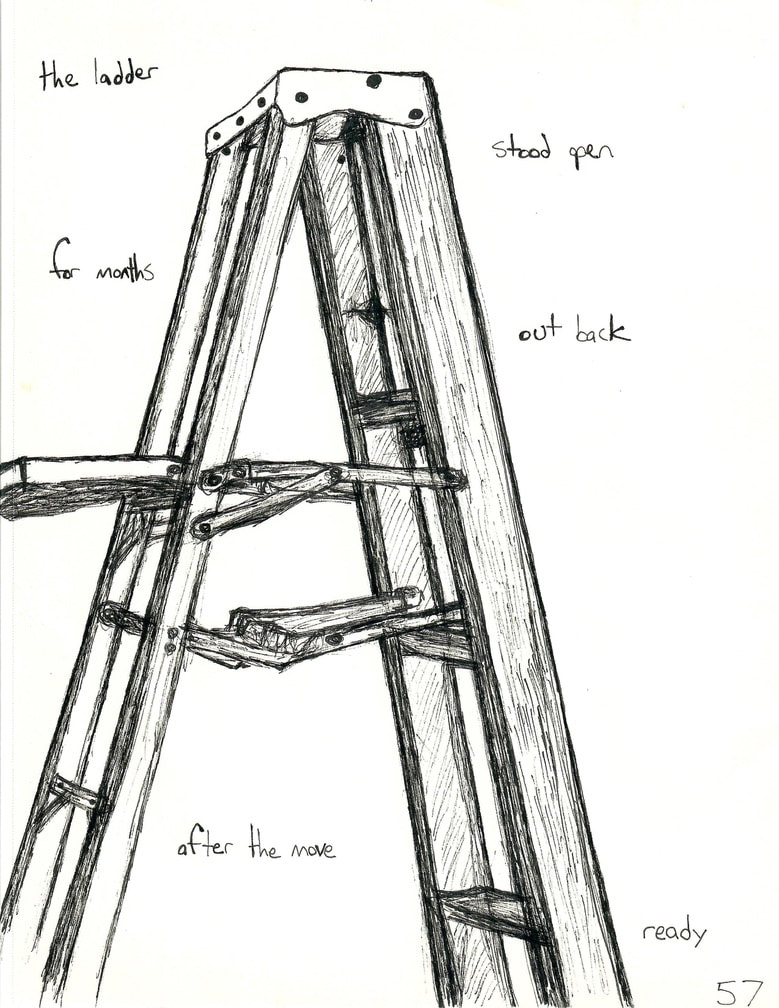










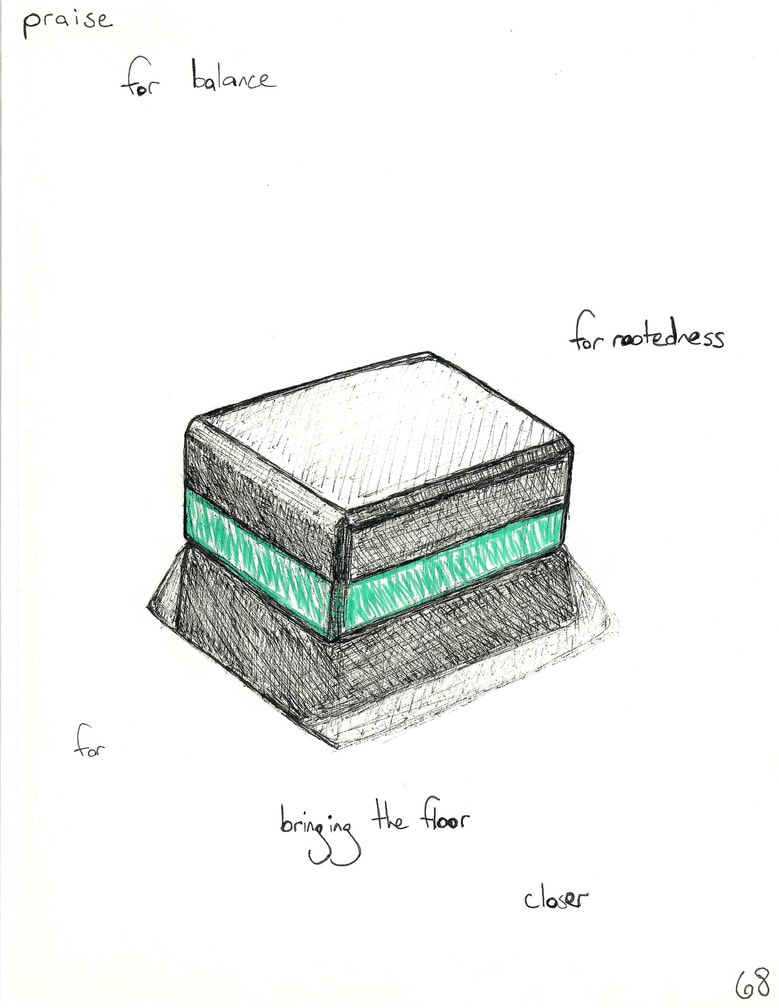

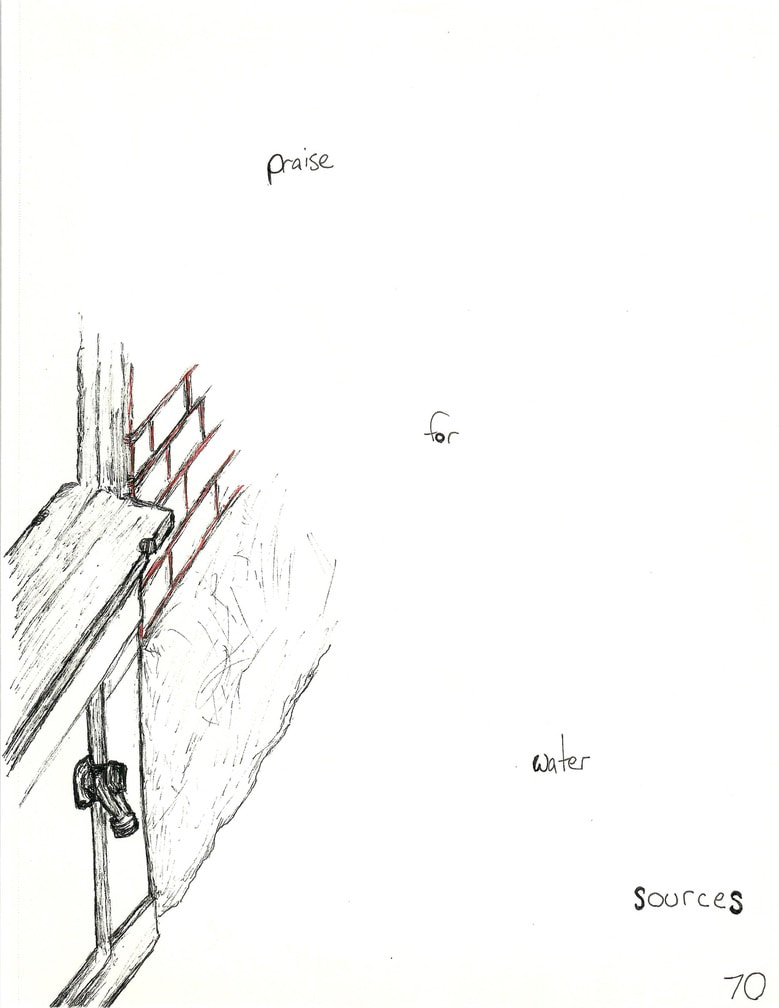


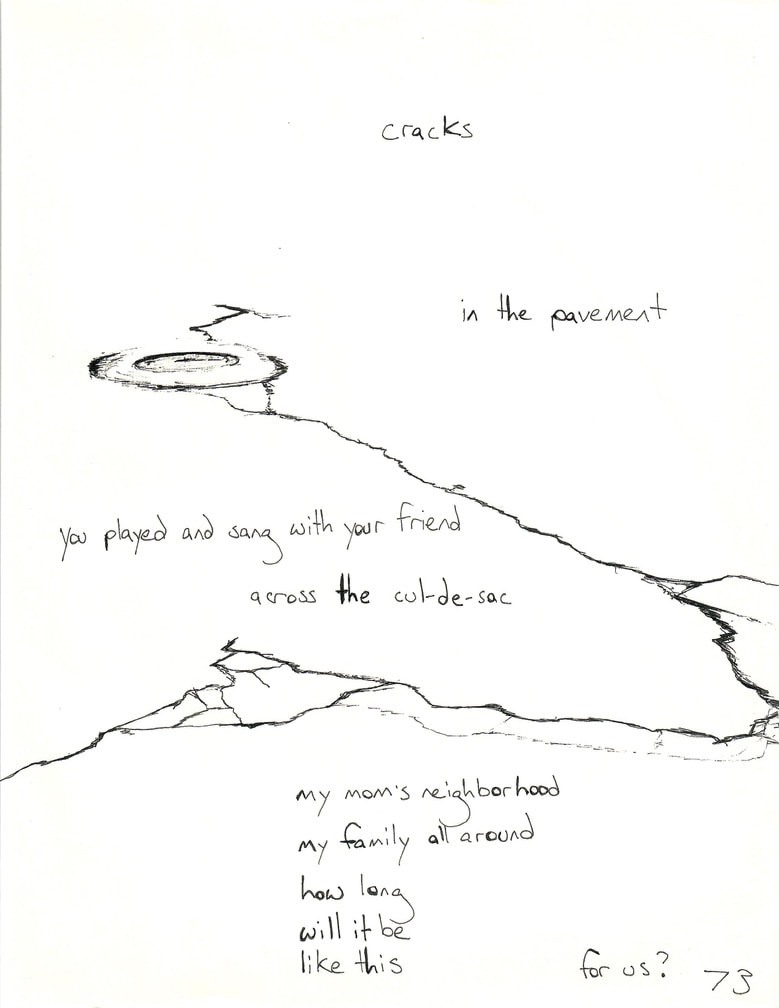
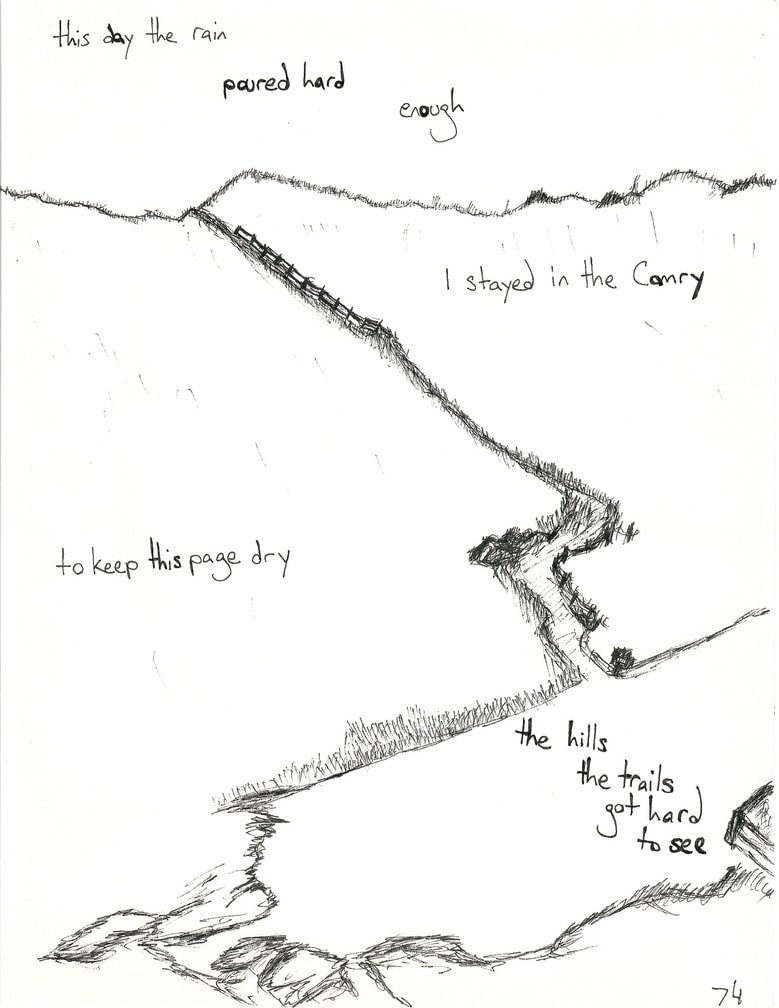









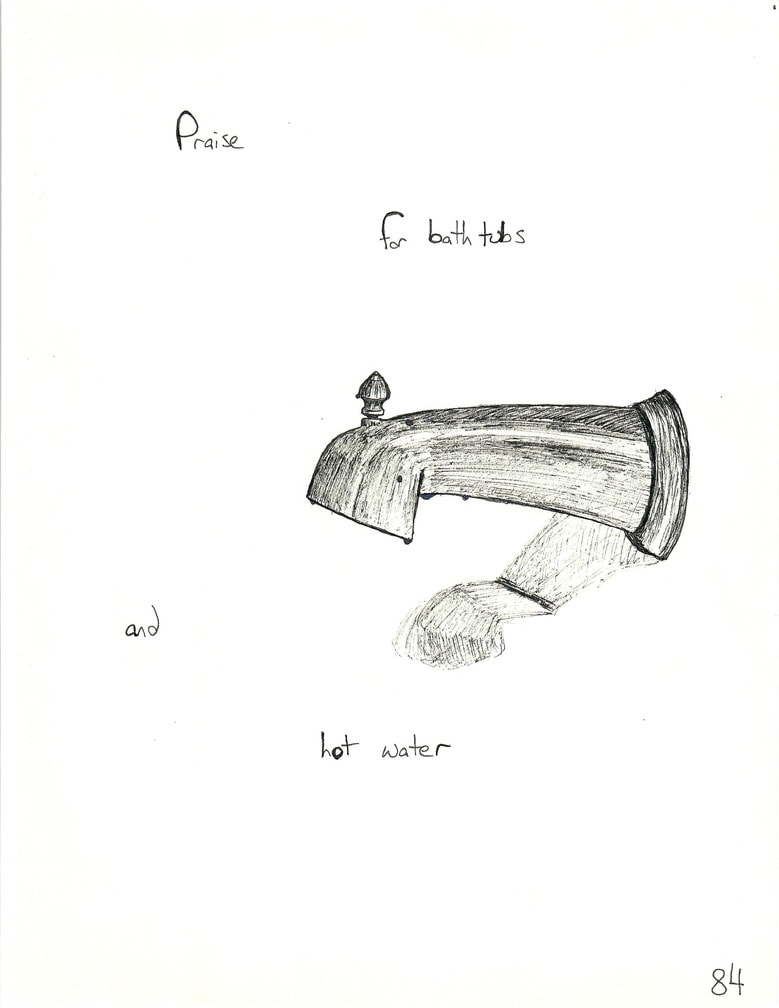



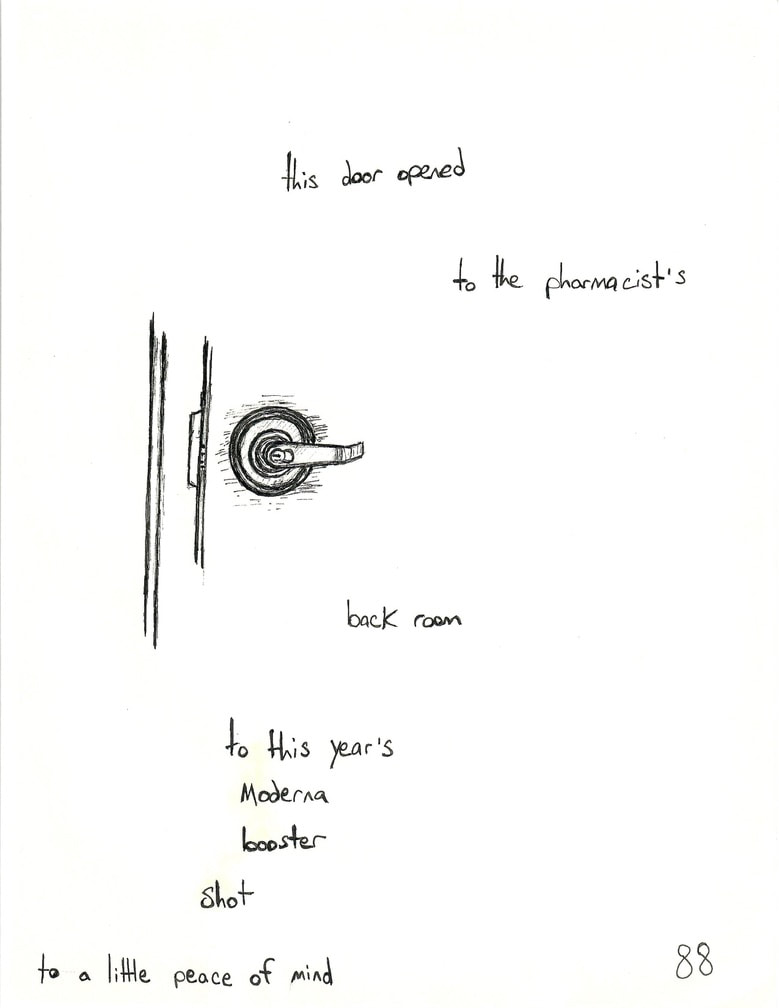




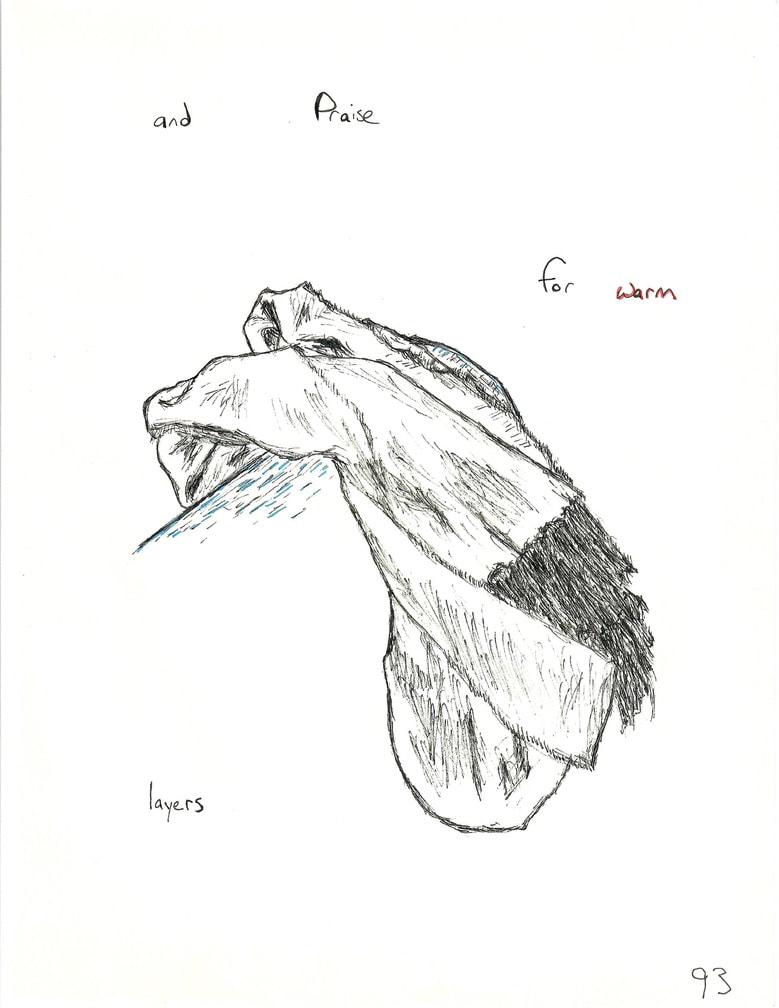




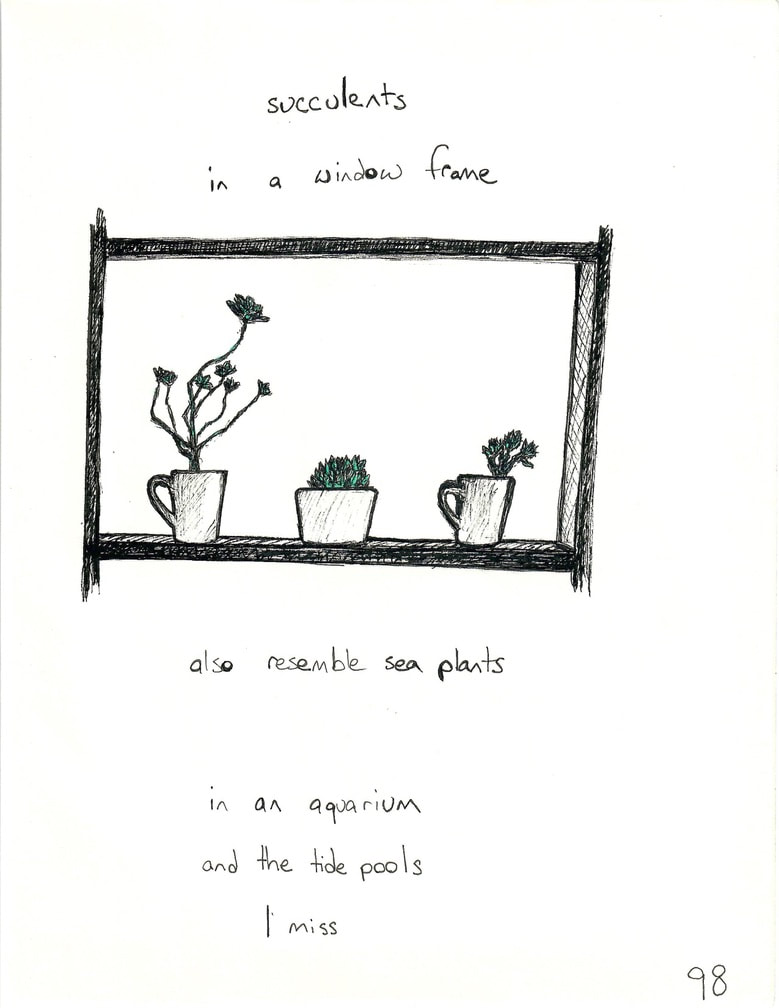
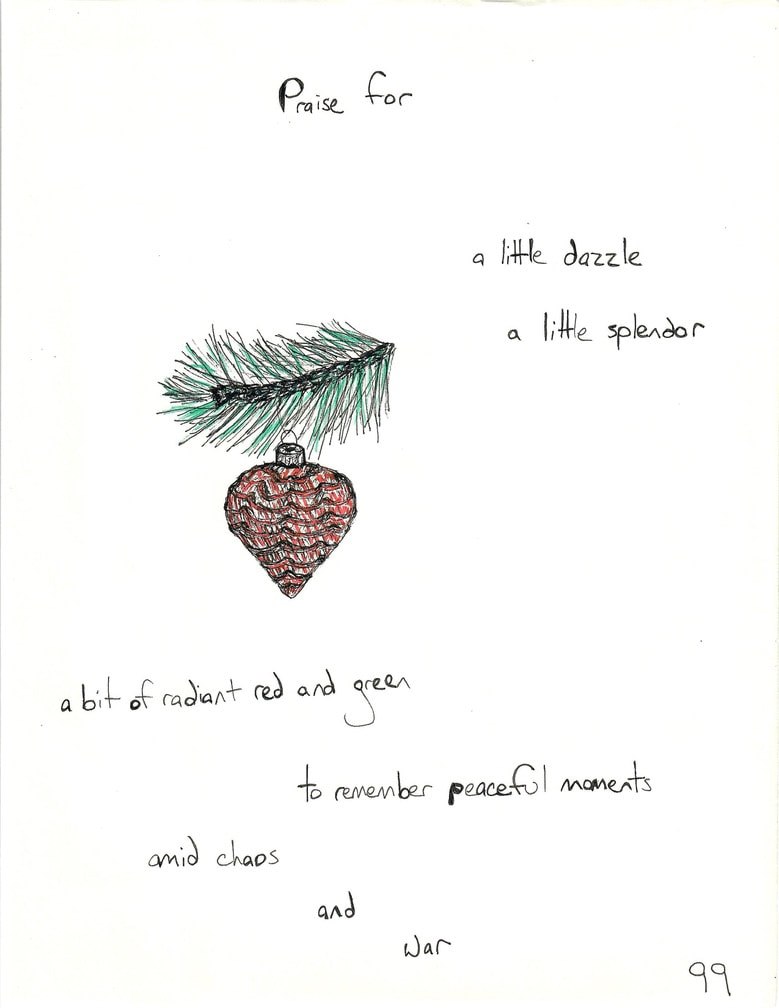



 RSS Feed
RSS Feed